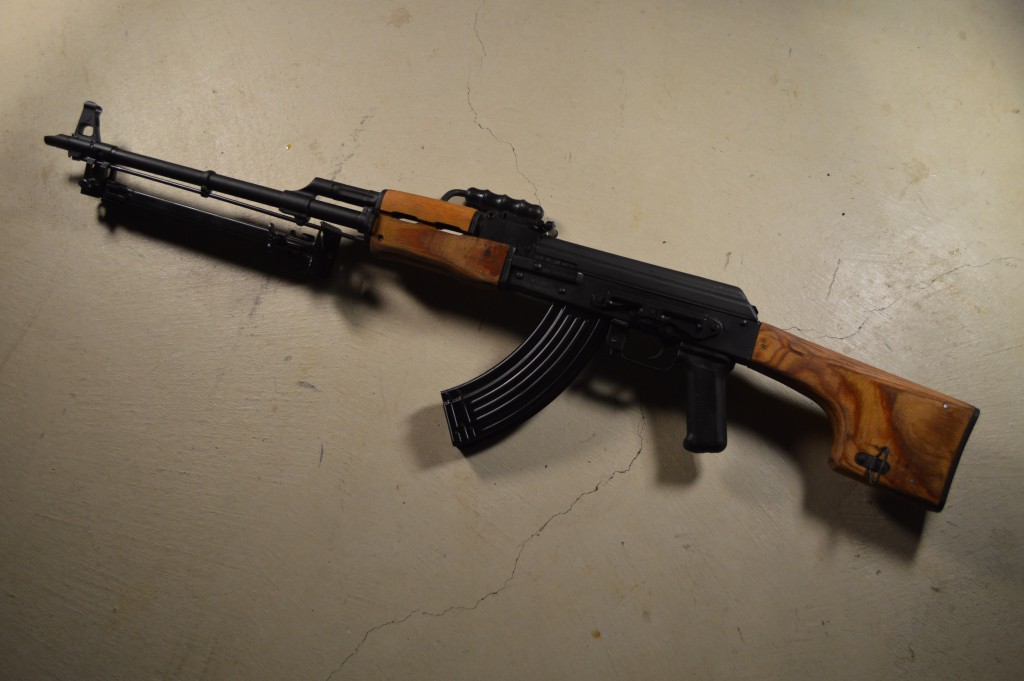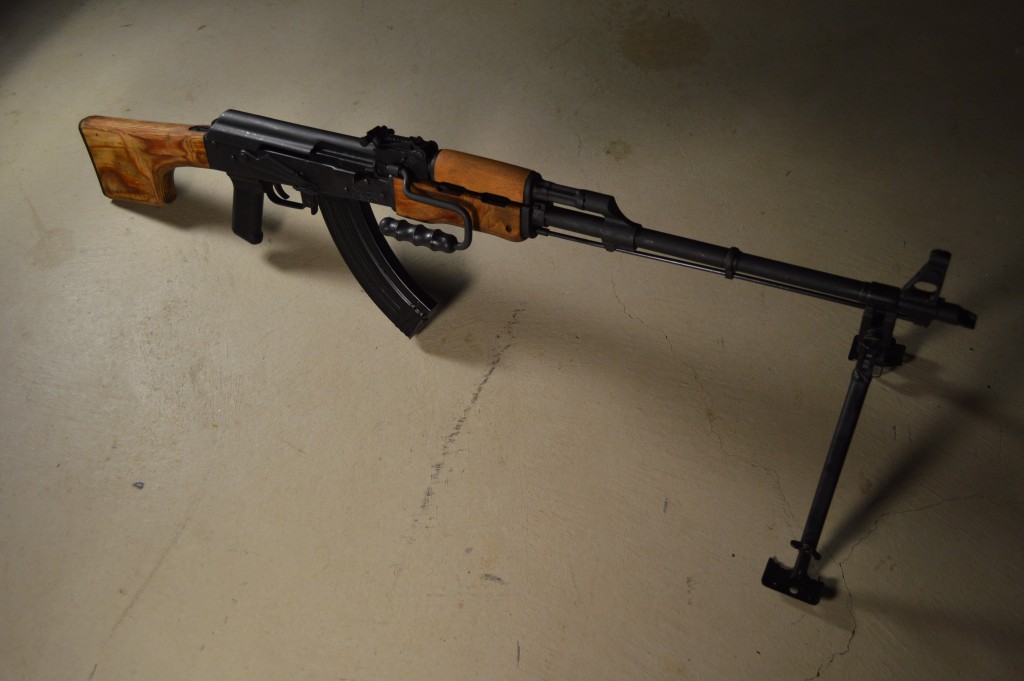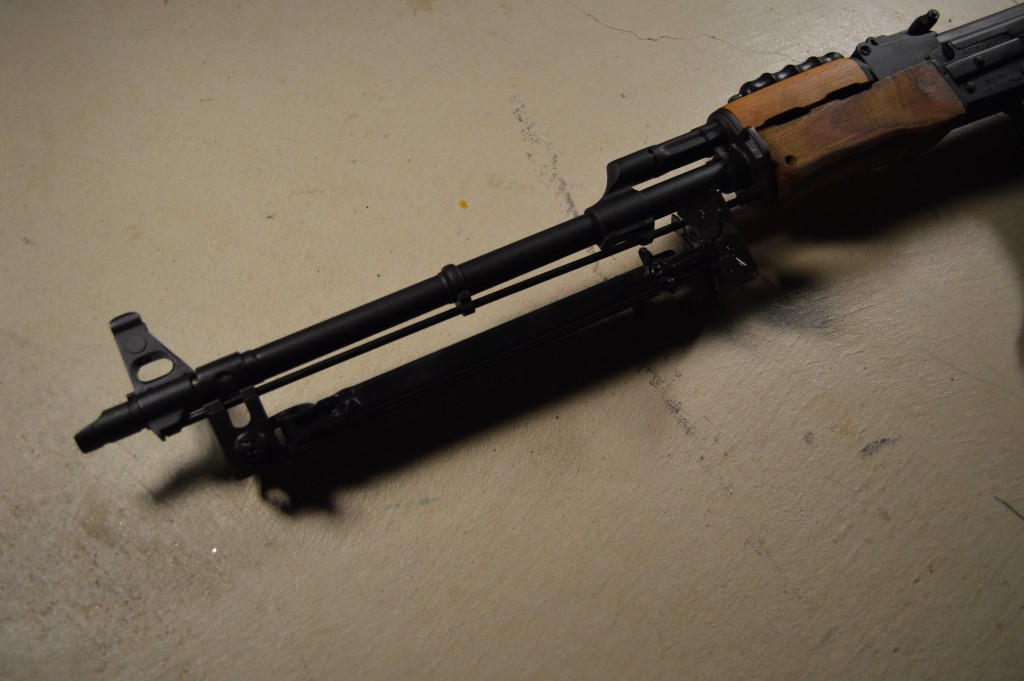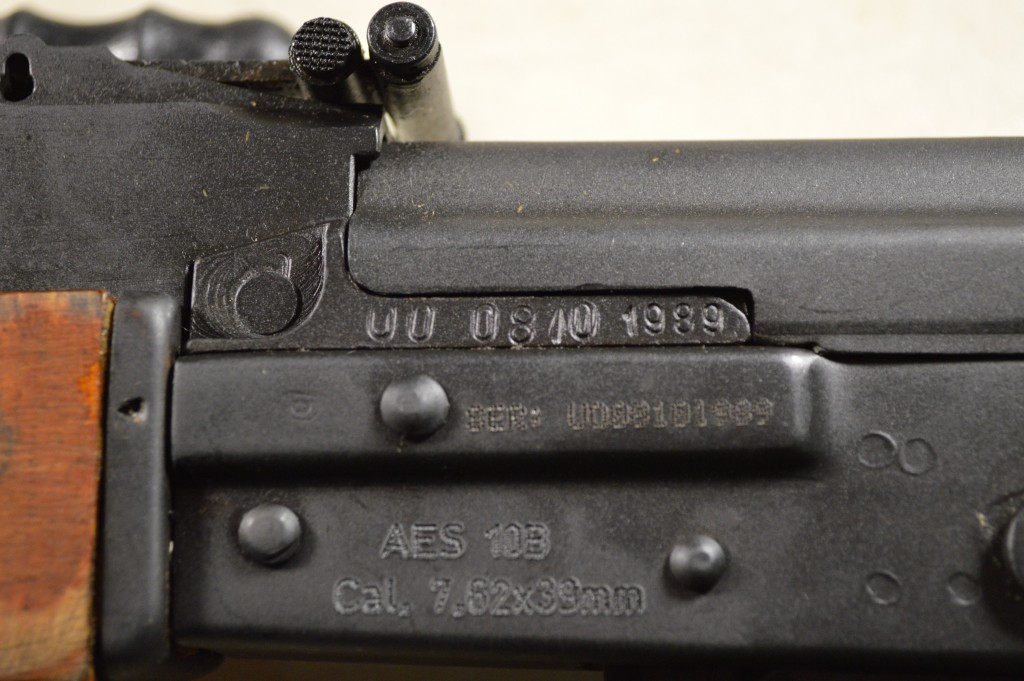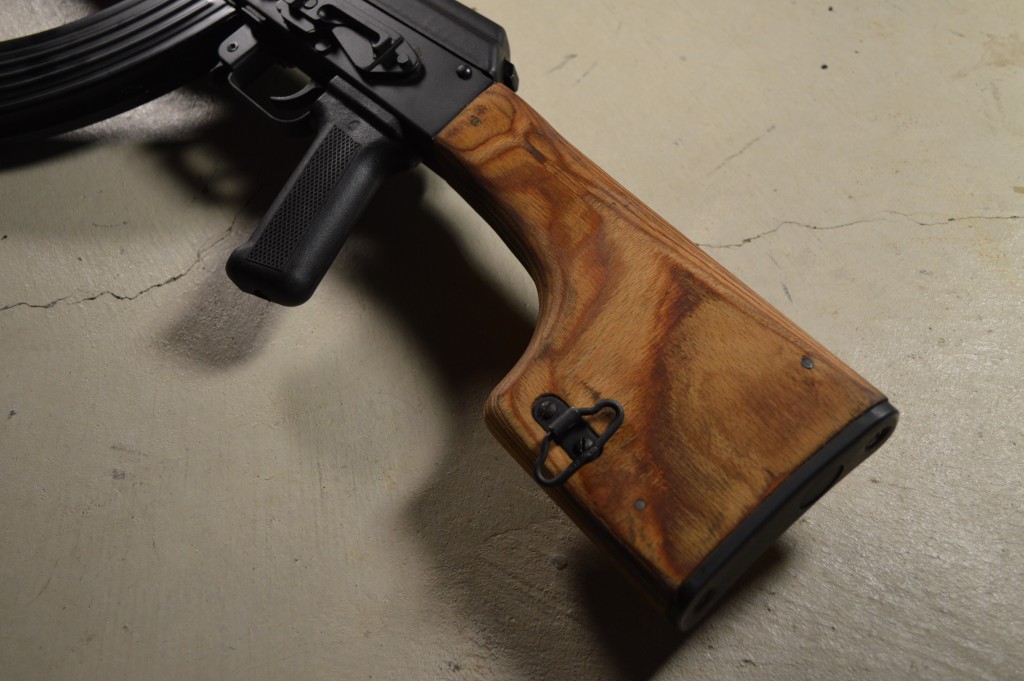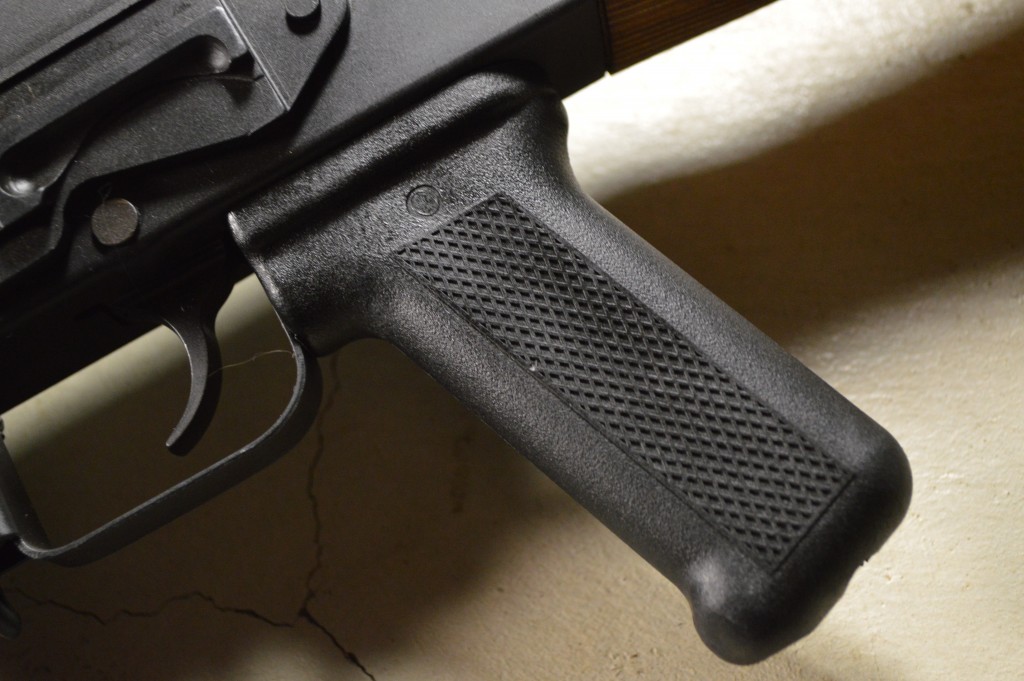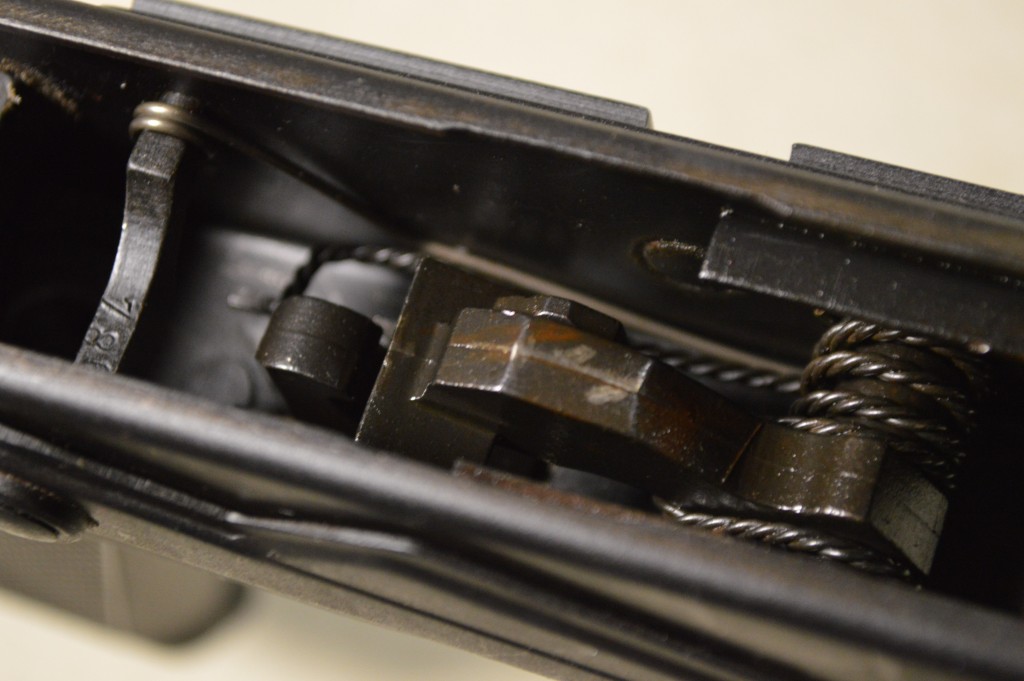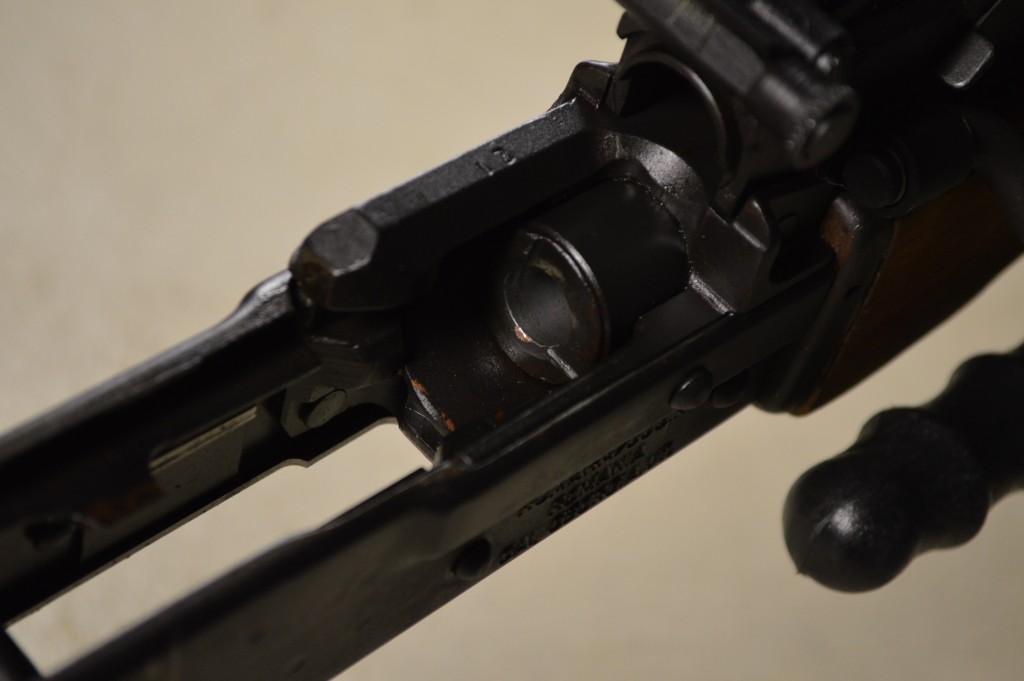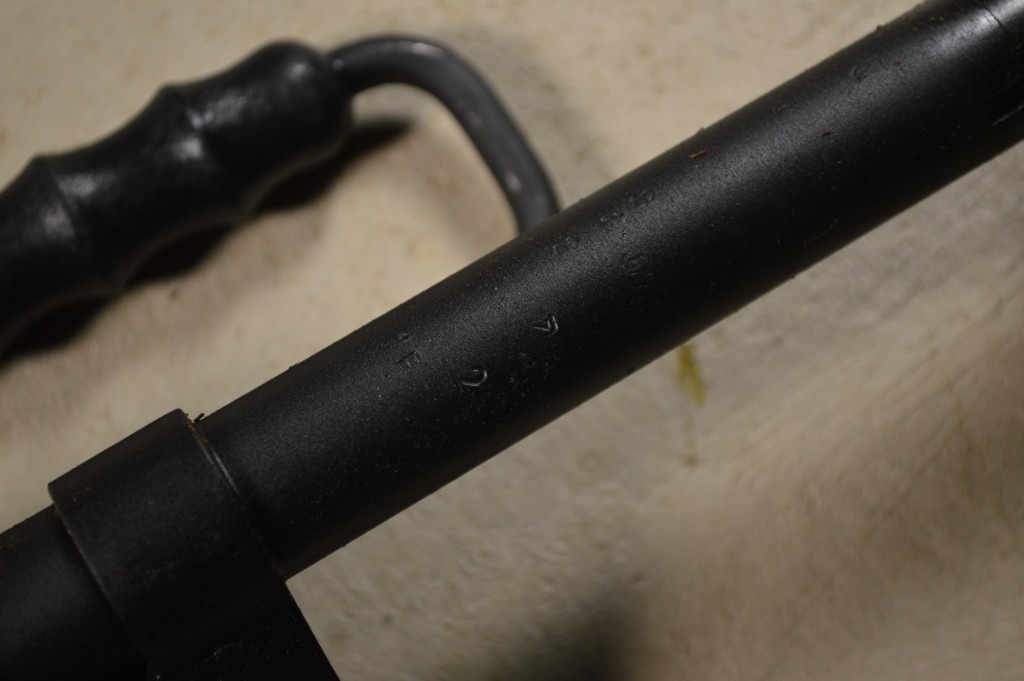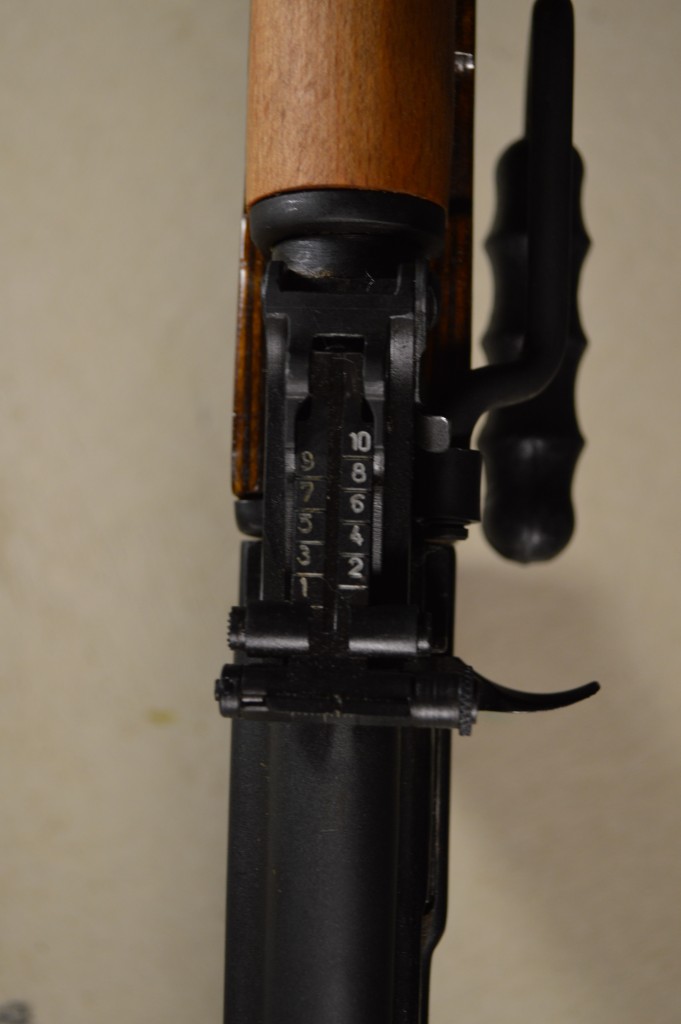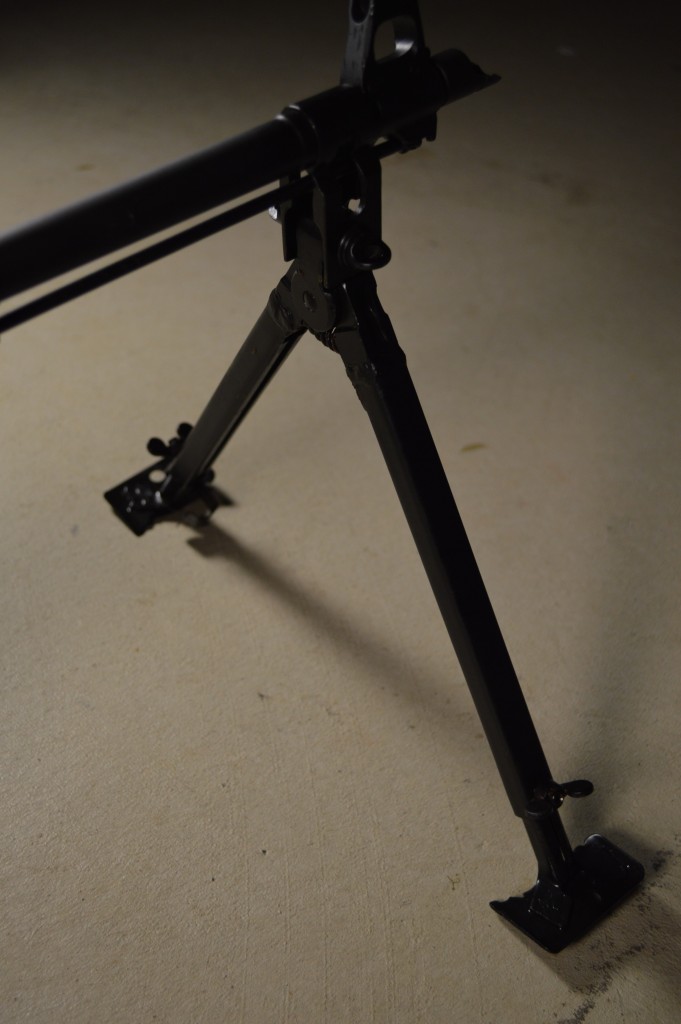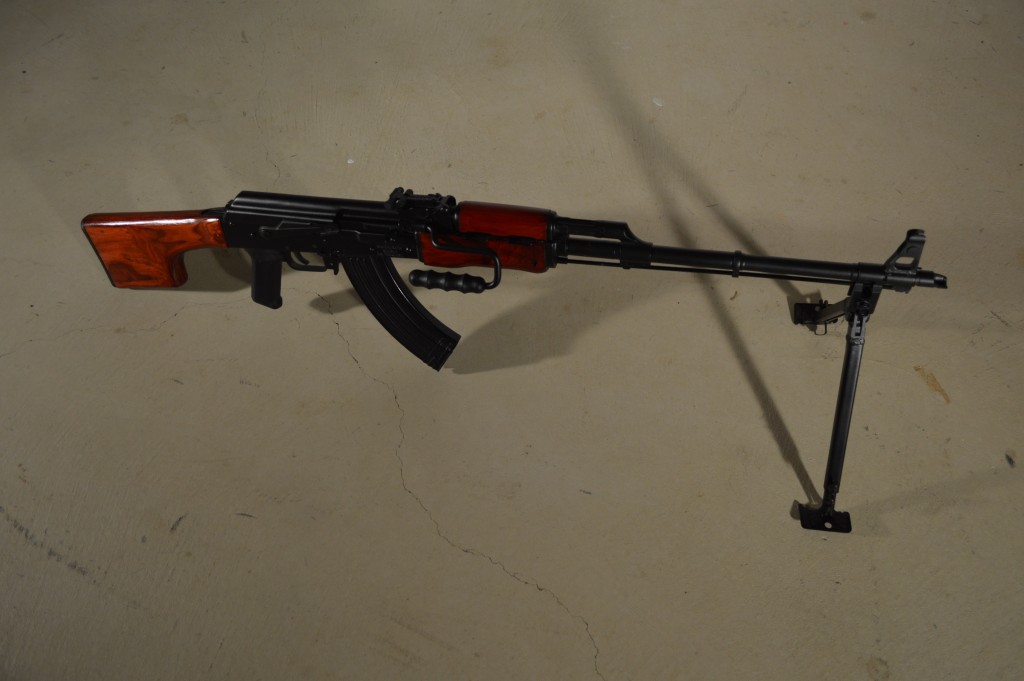Century Arms AES-10B Romanian RPK Review
As an AK enthusiast, the RPK has always been among my favorite rifles. Identical in operation and similar in appearance to the famous AKM, the heavier RPK often flies under the radar of casual shooters and gun owners who are more familiar with the standard AK. Because I have always been a fan of the AK family of rifles, I was ecstatic to see Palmetto State Armory offering the Century Arms Romanian AES-10B for a reasonable $499 last July. After quickly selling my highly impractical Suomi KP/-31 for almost the same price, I scrambled to PSA’s website to take advantage of the deal.
About the Rifle
The Ruchnoy Pulemyot Kalashnikova, or RPK, is essentially a beefier brother to the popular AKM. First fielded by the Soviets in 1961, the RPK was quickly adopted and cloned by other Warsaw Pact nations, including Romania, who first issued the rifle in 1964. The AES-10B is Cugir of Romania’s semi-automatic version of the RPK that is built using military surplus parts on new receivers with new military-spec barrels.
As an RPK variant, the AES-10B features a heavier profiled, 23-inch barrel and a receiver that is 50% thicker than the AKM’s (1.5mm versus 1.0). These parts are reinforced to handle sustained fully automatic fire and are mated using a heavier, bulged trunnion. At the front of the rifle, just behind the front sight post, a bipod is mounted directly to the barrel. This bipod folds backwards when not in use, and unlike Russian RPKs, most Romanian rifles feature bipods that are adjustable for height using two wing-nuts near the feet of each leg. Another departure from the Russian rifle is that the Romanian variant sports a surprisingly useful carry handle to the right of the rear sight block. Outside of these small differences and semi-automatic limitations, the Romanian AES-10B is a faithful clone of a classic Soviet RPK.
Finish
All metal parts on the AES-10B are finished with a flat, medium gray phosphate that is frankly pretty average, even as far as parkerization goes. I have found that this original treatment scratches easily and seems to be a dirt magnet. That said, the rough texture of the phosphate is precisely why it is an excellent base for paint to adhere to. I recently applied my favorite AK finish, Rust-Oleum Appliance Epoxy, as a finishing coat to this rifle and have found that it adheres very well to the original parkerization. For those who are not interested in painting their AES-10B, the phosphate is serviceable, but it is not as attractive or as corrosion resistant as “paint-over-park”.
Furniture
The AES-10B ships with wood handguards and a laminate clubfoot stock. The pistol grip is a black polymer part that was made in the United States and added for 922(r) compliance. As far as laminate AK furniture is concerned, Romanian laminate ranks solidly in fourth place by my standards. Russian birch obviously takes the top spot for me, followed by Polish beech wood and Egyptian (actually Finnish). Romanian laminate often has a heavier grain structure than the examples mentioned above, and almost always is imported sans finish. It also does not exhibit the “chameleon” color-shifting grain effect that makes Russian birch so popular. On my AES-10B, the laminate stock showed signs separation between two of the layers, but this is easily fixed if caught early. The lower handguard is also laminate, while the upper is hardwood. Even though I am critical of the wood, it is relatively easy to add your own finish to improve its appearance and preserve the parts. I opted for Soviet-style shellac and have been pleased with the results.
Ergonomically, many are likely to feel that the AES-10B falls short, even by AK standards. The clubfoot is even shorter than the standard AK/AKM stock, and the heavy barrel pulls the rifle’s center of gravity forward of the short handguards. As a faithful RPK clone, these ergonomic complaints should be expected. Like all Romanian RPKs, the AES-10B features a carry handle to the right of the front sight block. Russian RPKs do not offer such a luxury, and I have found it to be useful when carrying the rifle at home or the range.
While I understand why it was included, I am no great fan of the US-made pistol grip. The black polymer looks out of place on the AES-10B, and it is thinner in profile than a standard Romanian Bakelite grip. For this reason, my rifle now sports a Romanian grip.
Build Quality
By any standards, the build quality of the AES-10B is quite exceptional. Even though I have criticized the finish of the rifle, when it comes to the actual build and the parts used, the AES checks every significant box. The rivets are all set appropriately and crushed evenly. The receiver is properly dimpled at the front and rear trunnions for the swell neck rivets, which adds strength and longevity to the build. When charged, the bolt carrier rides smoothly on the rails with no tendency to hang up on the hammer or jump the rails when cycling. As far as the naked eye can tell, the sights are straight, and the barrel threads are clean.
Speaking of the barrel, it may be the highlight of the package. The AES-10B ships with a Romanian cold hammer-forged barrel that has been chrome lined. Cold hammer forging makes for a harder, more wear-resistant barrel and chrome lining not only enhances this durability, but it is also sure to be appreciated by anyone who has ever tried to clean a rifle after using dirty or corrosive ammunition. AKs and variants with military quality, cold hammer-forged, chrome-lined barrels are far less common today than they were just two or three years ago. Import restrictions bar original military barrels from import, even in parts kits. Thankfully, the AES-10B has been built from the start as a sporting rifle. Though Romanian surplus parts are used on these rifles, the barrels themselves are new. They are still produced using the same hammer forging process on the same lines as Cugir’s military products, but they have never been assembled on a military rifle, so the restrictions do not apply.
Century Arms imports, especially from Romania, have a spotty history when it comes to quality control, specifically concerning the work done on the rifles once stateside. To comply with US import regulations, the AES-10B comes into the country with a magazine well capable of accepting only single stack magazines. Once in Century’s hands, these wells are opened up to fit standard double-stack magazines, and US-made 922(r) compliance parts are added. In the past, Century had a terrible tendency to remove too much material around the well, causing significant magazine wobble. Based on my experience with this rifle and reports from other shooters, it looks like Century has gotten their act together.
Range Report
The AES-10B is an extraordinarily enjoyable rifle to shoot. Its heft might he a hindrance if trying to shoot while moving, but as a bench rifle, the AES really shines. It also happens to be one of the few firearms in my collection that I legitimately wish was fully automatic. The long, moderate recoil stroke just seems like it would be amazing in a fully automatic package.
When it comes to accuracy, the AES-10B is about a three minute-of-arc (MOA) rifle. It is difficult to assess the potential of the design because the point of impact (POI) can vary drastically, depending on if the rifle is fired while supported by the bipod, barrel, or handguards. I have seen as much as an additional 3 MOA difference between using the bipod and firing with the handguard on sandbags. Unfortunately, this inconsistency is a product of the RPK’s design and the bipod’s mounting location at the front end of the barrel. My advice for those who own an AES-10B or similar RPK clone is to sight the rifle for your preferred shooting position and then take note of the holdover necessary when fired from different support layouts.
The G2 trigger included with the AES-10B is absolutely phenomenal. Mine breaks at right around 4 to 4.5 pounds and others should be expected to do the same. Another noteworthy point is that I have experienced no failures to extract or eject with this rifle. My AES-10B’s ejection patterns are consistently strong, with cases landing as many as 10 feet away at the 4 o’clock position.
Conclusion
While it is not the prettiest rifle out of the box, the AES-10B is a real gem. This rifle has sold me on Century’s Romanian AK imports and has me legitimately considering a WASR-10 for a fun/beater AK. When I purchased AES from PSA for $499, I felt like I stole it. Now that Cugir is no longer producing the AES-10B, prices on these rifles have rapidly increased, with some going as high as $1,000. When available, I would still consider the AES-10B a “buy” at up to $750 with the potential to go as high as $850. Beyond that, I would rather convert a Russian Vepr to RPK configuration. Even so, for someone looking to buy a true factory-made RPK, the AES-10B is a very solid option.
An information security professional by day and gun blogger by night, Nathan started his firearms journey at 16 years old as a collector of C&R rifles. These days, you’re likely to find him shooting something a bit more modern – and usually equipped with a suppressor – but his passion for firearms with military heritage has never waned. Over the last five years, Nathan has written about a variety of firearms topics, including Second Amendment politics and gun and gear reviews. When he isn’t shooting or writing, Nathan nerds out over computers, 3D printing, and Star Wars.

